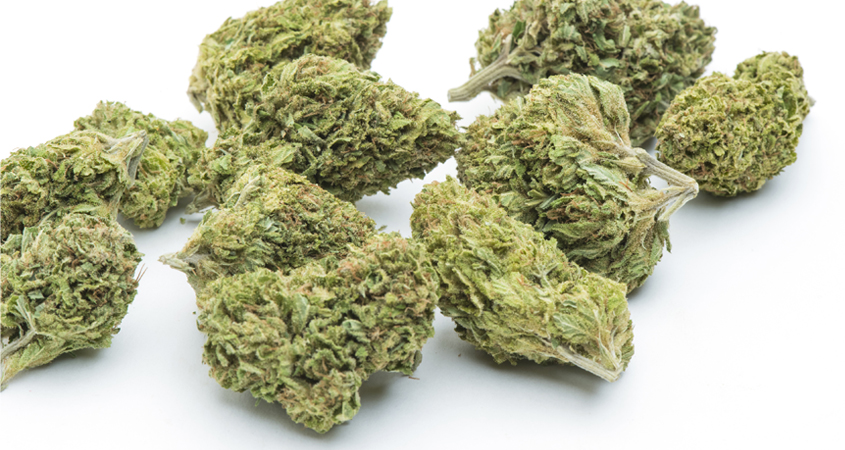The raw flower of a cannabis plant can be produced into different products that affect its onset of action and total duration of effects.
Step 1: Processing to Concentrates
The raw flower of a cannabis plant can be produced into different products that affect its onset of action and total duration of effects. Initially these flowers are processed into acid forms of cannabinoids, such as THCA and CBDA, which do not have any psychoactive effects but may have some medicinal effects that are not yet well understood. Only after being heated do cannabinoids convert into THC and CBD, which both have pain relieving and muscle relaxation effects.
The term cannabis concentrate refers to a product that is derived from the extraction, isolation, and purification of one or more compounds from cannabis. Concentrates are available as ingestible oils and as alcohol-based extraction tinctures; both such forms can be consumed orally, sublingually (under the tongue), or by adding them to food and drink.
Step 2: Concentrates to Products
Canabo Medical Clinics data suggests medical patients prefer more traditional medical-looking oral products (oils, capsules) over less conventional inhalation methods.
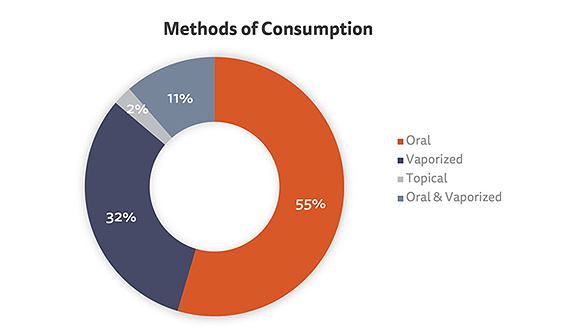
Inhaling by Smoking or Vaporizing
Both medical and recreational users may choose to smoke or vaporize dry cannabis flower or concentrated products. The goal is to quickly deliver cannabis to the lungs to achieve rapid psychoactive and relaxation effects, appetite enhancement and periodic pain relief. This method of use produces rapid onset of effects (5-10 minutes). The duration of such effects are short lived (2-4hrs).
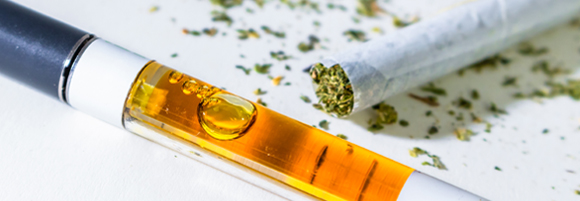
When smoking the flower, many of the cannabinoids are burned in the air instead of in the body. Like cigarette smoke, the by-products of combustion have cancer-causing properties and may increase the risk of lung issues such as bronchitis or COPD. When vaping, heat produced by electricity releases cannabis constituents in vapor form that is inhaled into lungs. Though more study is required, this method of use may be safer than smoking.
Oral by Ingestion, Spray or Edibles
Pharmaceutical grade oils and capsules are produced by extracting the oil from cannabis flowers. Medical products are standardized with specific volumes and concentrations of cannabis ingredients. The onset of action is 30-90 mins with a longer duration of action (4-8 hours or more) when compared to inhalation methods.
This method of use can be more medically beneficial if the goal is to alleviate chronic daily symptoms.
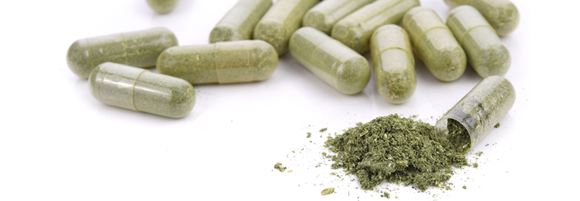
Sub-lingual or ‘buccal’ products usually come in the form of a spray. This method works very similar to ingesting oil or capsules. Most will spray the cannabis onto their inner cheek and is absorbed on the cheek and once swallowed, in the stomach it has a quicker onset of action but has a similar duration to other oral routes.
Edibles, which are cannabis-infused foods and beverages, come in a large variety of forms, including baked goods, chocolate bars, drinks, gummies and lozenges.
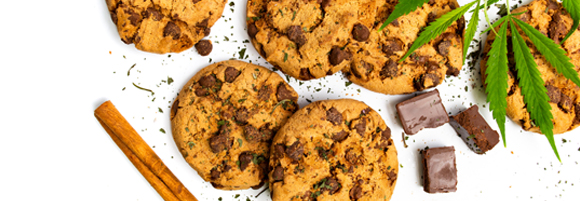
Once in the GI tract, the effects of an edible tend to manifest more slowly and last longer compared to the effects of inhaled cannabis. Because these cannabinoids are absorbed more gradually when ingested, this drug can create a ‘creeper’ effect. People are often tempted to take a second dose while the first dose has not yet ‘kicked in’ causing more side effects such as a sedation, euphoria (high), and anxiety.
Topicals, Transdermals
Topicals are lotions, balms, and oils that are absorbed through the skin to provide localized relief of pain, soreness and inflammation.
Medical cannabis users often apply cannabis as a balm/cream for localized symptom relief. In the cosmetic industry, CBD skincare, mostly from HEMP sources, is becoming a trendy solution for anti-aging and anti-inflammation.
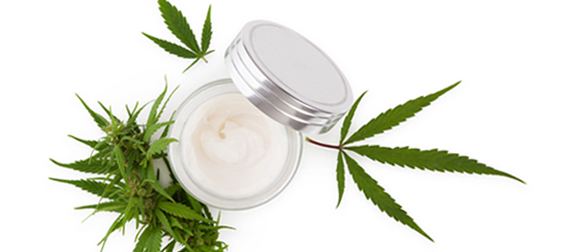
It absorbs very slowly through skin. It works only locally and not on the entire body. People often choose topicals because they deliver the therapeutic benefits of cannabis without the typical ‘high’ that is often associated with other forms of delivery.
Different strains of cannabinoids and terpenes are effective at treating different conditions. A cannabis product that is optimal for one individual may not be suitable for another person because of variables including genetics and individual medical conditions. Reducing trial and error side effects from the use and prescribing of cannabis can occur by knowing your drug metabolism tendencies toward THC and CBD. Completing such a pharmacogenetics test will not only provide you and your prescriber this valuable knowledge but also inform you as to how cannabis will interact with other drugs that you consume, including alcohol and caffeine. Genetics testing can also offer insights about cannabis efficacy toward certain health conditions.


